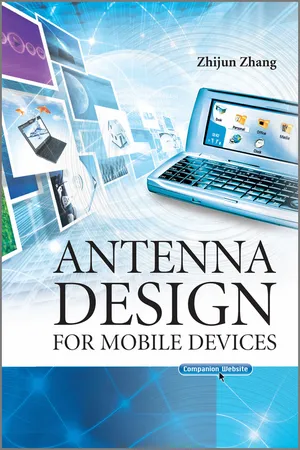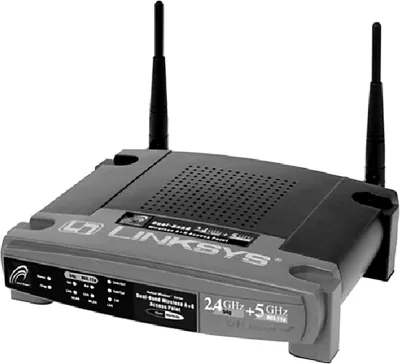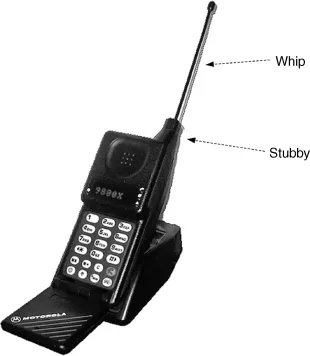![]()
Chapter 1
Introduction
The twenty-first century is the wireless century. In the near future, it is very likely that most electronic devices will include some wireless functionality. If we look at the job market, known brands which seem have nothing to do with antennas, such as Microsoft, Google, Amazon, and so on, are all recruiting engineers with antenna knowledge. On the other hand, there are not that many antenna engineers out there. The root cause of the shortage of antenna engineers can be traced all the way back to the university. The cornerstone of antenna engineering is electromagnetics (EM), which is a quite abstract class and involves a lot of mathematics. The world unveiled by electromagnetics is a four-dimensional one, which includes three spatial dimensions and one temporal dimension. To most students, the many new concepts introduced in the class are counterintuitive and confusing. As a logical consequence of natural selection, the EM major is removed by most students from their list of favorites.
People like to think of antennas as a black box of magic. The explanations given by antenna engineers are always so vague and it seems that they never give people a definitive answer. It is easy to come to the conclusion that even designing a simple antenna requires years of experience. The truth is that if there were an appropriate book which presented all the required information, most electronic engineers who have studied some electromagnetic theory in university could design antennas. You do not need any mathematics to design an antenna. What you need is an understanding of how an antenna works. Of course, if you want to be an exceptional antenna engineer and design antennas with extreme constraints, a solid knowledge of EM theory and years of experience are still necessary.
This book provides a comprehensive discussion of the state-of-the-art technologies of antenna design for mobile communications. The book covers all the important aspects an engineer might need when designing an antenna, which includes how to make a fixture, how to design various antennas, how to optimize match circuits and carry out different measurements.
This book has six chapters and they are arranged as follows:
Chapter 1 provides an overview of most antenna design technologies used in mobile devices. Before anyone starts to design an antenna, it is very helpful for him or her to understand: (1) what can be done?; and (2) what kind of freedom do we have? Both topics will be briefly discussed here.
Chapter 2 describes different matching techniques used in antenna design. In real-world engineering, antenna matching circuits are widely used, probably in at least half of all devices. The popularity of the matching network is due to two reasons: (1) it gives the engineer more freedom, one more parameter to play with when making design trade-offs; and (2) the value change of a matching component is quite a quick process, which can be a last-minute change. On the other hand, an antenna modification needs at least several days of lead time. This chapter discusses single band matching, multi-band matching, and advanced matching techniques. Complementary software written by the author will be provided to provide practice matching techniques (see the web address on the back cover).
Chapter 3 introduces different external antennas, including both stubby and whip-stubby antennas. The external antenna used to dominate the cell phone antenna design. The market share of external antenna has been consistently decreasing in the past decade, but it is still a very important antenna configuration. With the adoption of MIMO (multiple-input and multiple-output) technology in handsets, the external antenna might see its renaissance in the near future. Many basic techniques used in external antennas, such as multi-mode-single-radiator, multi-band antennas, and multi-radiator multi-band antennas, are also used in internal antennas.
Chapter 4 introduces different internal antennas. The internal antenna is the current fashion. Under the internal antenna category there are several different concepts, such as folded monopole, IFA/PIFA, loop, and ceramic antenna. All of these will be discussed in this chapter.
Chapter 5 introduces important issues related to engineering antenna measurement. Besides the passive antenna measurement, which is familiar to most electronic engineers, active measurement will also be discussed. Some details, which are key to accurate measurement, such as how to make fixtures and use a choke, will all be covered in this chapter. Various antenna measurements in the production line are also covered in this chapter.
Chapter 6 is about the various regulations which are important to antenna engineers. These can be split into three topics: (1) Specific Absorption Rate (SAR), which is about the radiation to the head and body; (2) Hearing Aid Compatibility (HAC), which is about electromagnetic compatibility with hearing aids; and (3) Electromagnetic Compatibility (EMC), which is about the electromagnetic compatibility with other devices.
It is recommended that the book is read in its entirety. However, for engineers who only want to design a single band antenna in the shortest time possible, Sections 4.1 and 5.1 and will provide enough knowledge to kick-start a simple antenna project.
1.1 The Evolution of Mobile Antennas
There is some argument about who invented the first mobile communication system, because for some people mobile communication also means vehicle communication. However, when referring to the first commercial handheld cellular phone, the answer is Motorola DynaTAC 8000X [1], without any doubt, which was introduced in 1983, as shown in Figure 1.1.
The antenna installed on a DynaTAC 8000X is a sleeve dipole antenna [2], which now is an obsolete design in the mobile phone industry but still widely adopted by various wireless LAN access points, such as the one shown in Figure 1.2. Sleeve dipoles are the best performing antenna ever installed on any cellular phone, however, this is also the largest cellular phone antenna. The length of a sleeve dipole is about half the wavelength at its working frequency. At 850 MHz, the antenna itself needs a length of 176 mm. At the dawn of the personal mobile communication era, those dimensions look quite reasonable when compared to a vintage cellular phone. For instance, the dimensions of a DynaTAC 8000X are 330 mm × 44 mm × 89 mm, without the antenna.
With the significant improvement in cellular technology and the aggressive shrinkage of the size of phones, soon the size of a sleeve dipole was no longer proportional to the phone. Unlike dipole antennas, a monopole antenna [3] on a ground plane has only a length of a quarter of a wavelength, which is 88 mm at 850 MHz. Shown in Figure 1.3 is a Motorola MicroTAC 9800X sitting on a charger. The phone is a flip phone and has a microphone located inside the flip. The thin wire on the top of the phone is a monopole whip antenna.
A sleeve dipole, such as the one shown in Figure 1.1, has an integrated choke which retains most radiation current within the antenna, thus the antenna is insulated from the phone and also from a user's hand on the phone. However, a monopole antenna must use the metal inside a phone as part of the antenna's radiating structure. Some portion of radiating current must flow over the phone. Putting one's hand on the phone absorbs some energy and thus decreases the overall antenna performance. Although the performance of a whip monopole antenna is inferior to a sleeve dipole, it is still better than all other members of the family of cellular phone antennas. The whip antenna is the second largest one in the family.
In fact, the antenna used on the MicroTAC 9800X is a retractable antenna. A retractable antenna is a combination of a whip antenna and a helix stubby antenna. When the antenna is extended, it functions as a whip monopole and provides good performance. When the antenna is retracted, it functions as a stubby antenna and still has acceptable performance. The retractable antenna has the best of both worlds, as it is a low profile solution and is still capable of providing good performance when neede...



